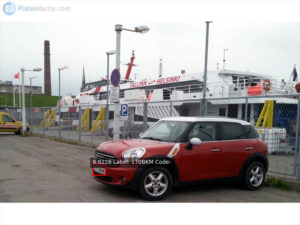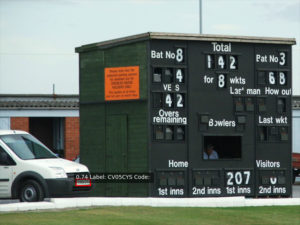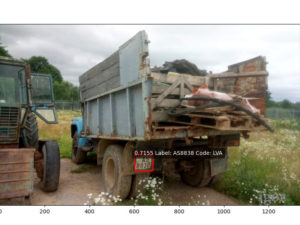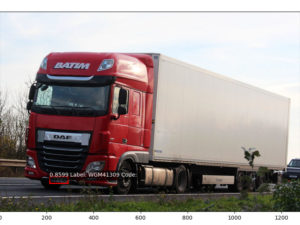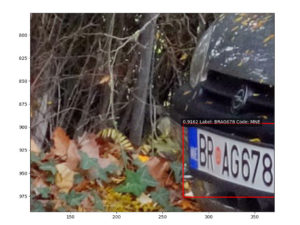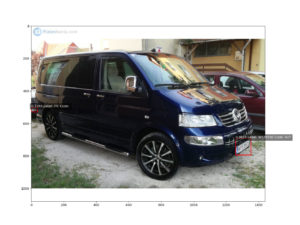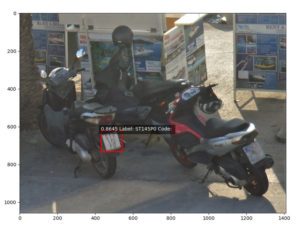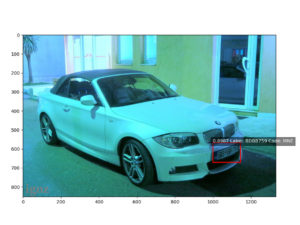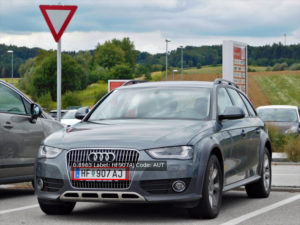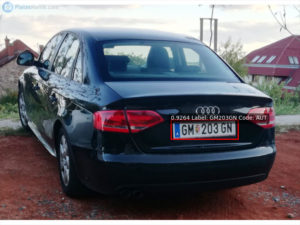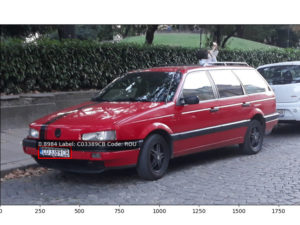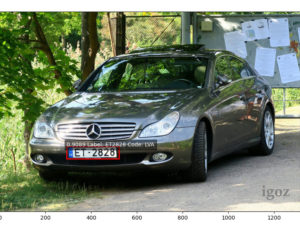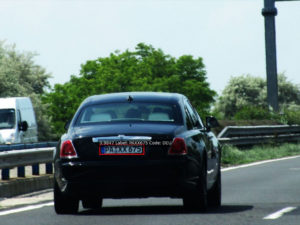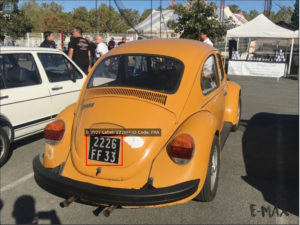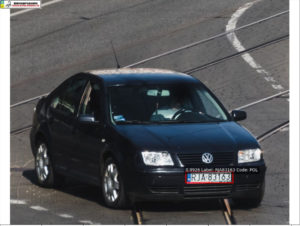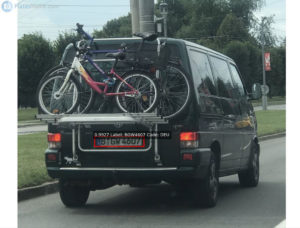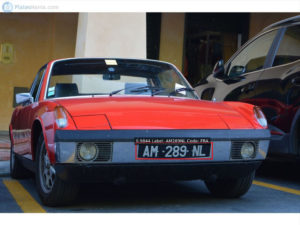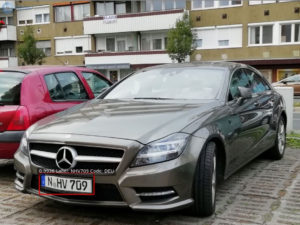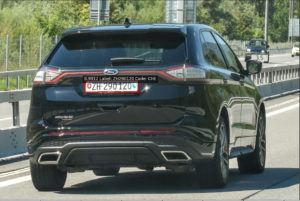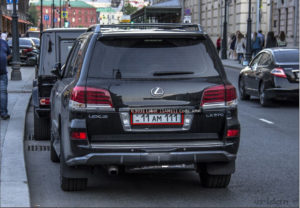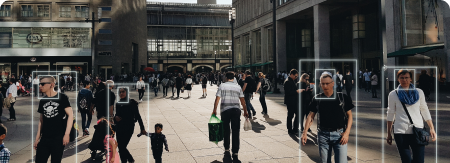
Face
The Face algorithm performs real-time detection, biometric identification and tracking of all detected faces.
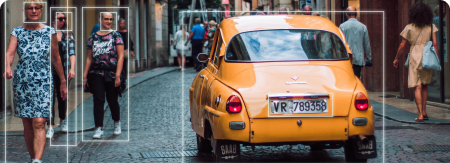
Vehicle-Human
The Vehicle-Human (VH) algorithm performs real-time vehicle or human detection, classification and movement tracking.
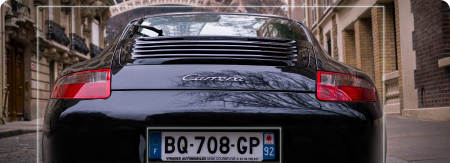
Automatic license plate recognition
The ALPR algorithm from the SentiVeillance component performs real-time vehicle license plate (number plate) detection and recognition.
Automatic license plate recognition algorithm
Reliable detection
License plates can be separated even in complex images, which contain objects like signboards or traffic signs. See the reliability tests below.
Traffic data processing
SentiVeillance algorithms can simultaneously read vehicle license plates from multiple moving vehicles in road traffic.
Tolerance to camera position
Depending on camera resolution, the ALPR algorithm can read license plates from longer distance and higher angle.
Combinations with other algorithms

VH modality can be used together with the ALPR modality, especially in these cases:
- Vehicle data detection. In certain scenarios a vehicle type (i.e. truck or bus) has to be detected before running the license plate recognition algorithm. Also, vehicle movement direction, color or model can be needed as a filter before running license plate recognition.
- Preventing cheating with replaced license plates. Integrators can make software logic which checks if recognized license plate corresponds other registration data, like vehicle color or make and model, and not being spoofed or moved from another vehicle.
Programming samples from the SDK show how to use this modality.
A license for using the SentiVeillance ALPR modality on one video stream is included with SentiVeillance SDK. Additional licenses or upgrade for the number of processed video streams in the existing licenses can be purchased any time by SentiVeillance SDK customers.
We present the testing results to show SentiVeillance ALPR algorithm reliability on the car images taken in different conditions. Images from the platesmania.com website were used for testing. The images were grouped into five datasets.
Two experiments were performed with images from each dataset:
- Experiment 1 – the OCR was set to interpret 1 (one) as I (letter I) and 0 (zero) as O (letter O).
- Experiment 2 – the OCR had no specific rules on letters and numbers interpreteation.
Dataset 1 contains lower quality images with license plates’ width less than 100 pixels. License plates are further away. Images feature partial occlusions and high capture angles. The pictures below illustrate sample images from the dataset:
Dataset 2 – medium quality images with license plates’ width between 100 and 200 pixels. The images were captured at mid-range and the license plates are closer to camera.
Dataset 3 – high quality images with license plates’ width between 200 and 300 pixels. Most of the images were captured in parking lot scenario, with only few motion blur or poor lighting.
Dataset 4 – high quality images with license plates’ width between 300 and 400 pixels. Most of the images were captured in parking lot scenario, with only few motion blur or poor lighting occurences.
| SentiVeillance ALPR algorithm reliability testing results | |||||
|---|---|---|---|---|---|
| Dataset 1 | Dataset 2 | Dataset 3 | Dataset 4 | Dataset 5 | |
| Image count | 1052 | 4174 | 3098 | 768 | 147 |
| License plate width (pixels) | less than 100 | 100-199 | 200-299 | 300-399 | more than 400 |
| Experiment 1 recognition ratio | 90.58 % | 97.50 % | 99.48 % | 99.86 % | 100 % |
| Experiment 2 recognition ratio | 87.54 % | 94.89 % | 97.44 % | 98.95 % | 98.63 % |
Supported countries
| List of 84 countries supported by SentiVeillance | ||||||
|---|---|---|---|---|---|---|
| AND - Andorra | BOL - Bolivia | EGY - Egypt | IND - India | MAR - Morocco | OMN - Oman | SVK - Slovakia |
| ARE - United Arab Emirates | BRA - Brazil | ESP - Spain | IRL - Ireland | MCO - Monaco | PER - Peru | SVN - Slovenia |
| ARG - Argentina | CAN - Canada | EST - Estonia | ITA - Italy | MDA - Moldova | POL - Poland | SWE - Sweden |
| ARM - Armenia | CHE - Switzerland | FIN - Finland | JOR - Jordan | MLI - Mali | PRT - Portugal | TGO - Togo |
| AUS - Australia | CHL - Chile | FRA - France | KAZ - Kazakhstan | MLT - Malta | PRY - Paraguay | TJK - Tajikistan |
| AUT - Austria | CIV - Ivory Coast | GHA - Ghana | KGZ - Kyrgyzstan | MNE - Montenegro | QAT - Qatar | TUR - Turkey |
| BEL - Belgium | COL - Colombia | GBR - Great Britain | KWT - Kuwait | MEX - Mexico | ROU - Romania | UKR - Ukraine |
| BEN - Benin | CYP - Cyprus | GEO - Georgia | LIE - Liechtenstein | MYS - Malaysia | RUS - Russia | URY - Uruguay |
| BFA - Burkina Faso | CZE - Czech | GRC - Greece | LKA - Sri Lanka | NGA - Nigeria | SAU - Saudi Arabia | USA - United States |
| BGR - Bulgaria | DEU - Germany | HRV - Croatia | LTU - Lithuania | NLD - Netherlands | SGP - Singapore | UZB - Uzbekistan |
| BHR - Bahrain | DNK - Denmark | HUN - Hungary | LUX - Luxembourg | NOR - Norway | SLV - El Salvador | VEN - Venezuela |
| BLR - Belarus | ECU - Ecuador | IDN - Indonesia | LVA - Latvia | NZL - New Zealand | SRB - Serbia | VNM - Vietnam |
